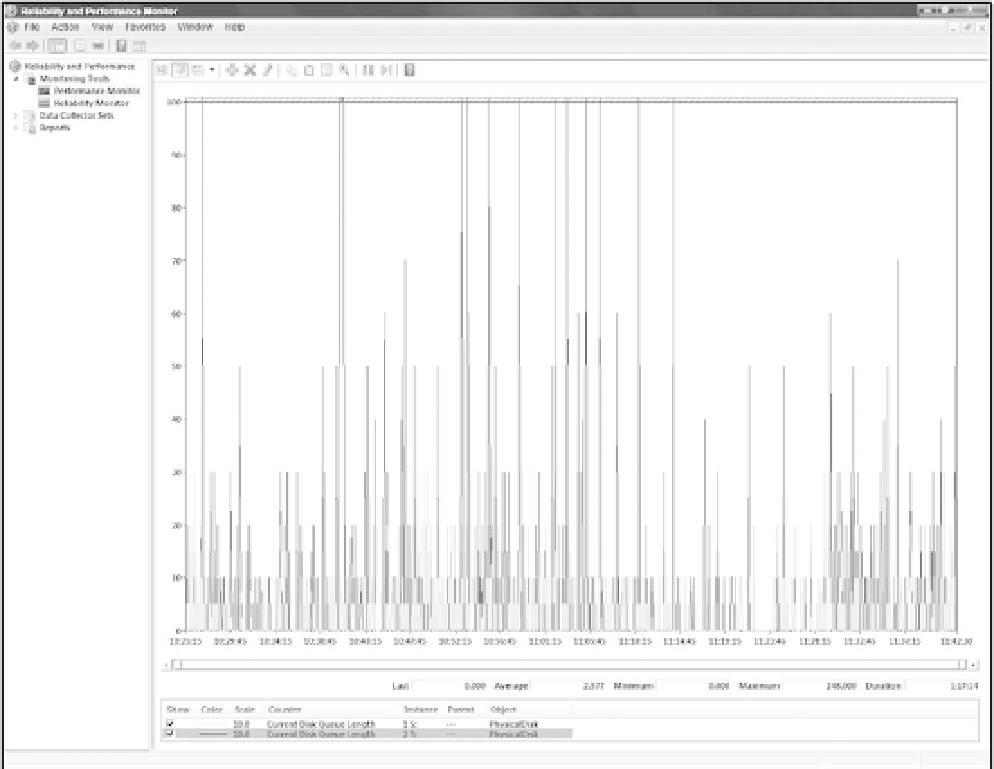Databases Reference
In-Depth Information
Typical DiskProblems
Disk problems are the most common type of performance problem since SQL Server is so dependent
on disk I/O to serve the databases. Lack of proper housekeeping, poor initial disk design, or database
architecture can all worsen over time. Figure 3-1 shows a disk with two volumes, where data was stored
on T: and logs stored on drive S:
Figure 3-1
Here you'll see excessive disk queue lengths on the data partition, which caused SQL Server to appear
unresponsive at times. Once identified, the problem was rectified by moving the busiest database to an
isolated partition, which allowed normal response times to resume.
Memory
Figure 3-2 shows a memory problem with SQL Server operating normally until it receives notification
from Windows to relinquish memory. In this case, an extended stored procedure, called within SQL













Search WWH ::

Custom Search